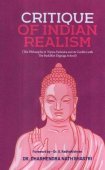Uddyotakara, Uddyotakāra: 5 definitions
Introduction:
Uddyotakara means something in Hinduism, Sanskrit. If you want to know the exact meaning, history, etymology or English translation of this term then check out the descriptions on this page. Add your comment or reference to a book if you want to contribute to this summary article.
In Hinduism
Nyaya (school of philosophy)
Source: Shodhganga: A study of Nyāya-vaiśeṣika categoriesUddyotakara (उद्द्योतकर).—The Nyāya-vārtika is a sub-commentary on Nyāyasūtra written by Uddyotakara. The date of Uddyotakara is about 635 A.D. In this commentary, the author develops many new arguments and sometimes presents new or alternative explanations for the same Sūtra. The main object which prompted Uddyotakara to write his sub-commentary was to oppose Dignāga, Nāgārjuna and other Buddhist logicians that preceded him. Dharmakīrti in his Nyāyabindu defended Dignāga and refuted the views of Uddyotakara.

Nyaya (न्याय, nyaya) refers to a school of Hindu philosophy (astika), drawing its subject-matter from the Upanishads. The Nyaya philosophy is known for its theories on logic, methodology and epistemology, however, it is closely related with Vaisheshika in terms of metaphysics.
Shaktism (Shakta philosophy)
Source: Google Books: ManthanabhairavatantramUddyotakāra (उद्द्योतकार) or Uddyotakāraka refers to “one who imparts radiance to the rays” (of the sun), and is used to describe Trivikrama, as discussed in the Yogakhaṇḍa of the Manthānabhairavatantra, a vast sprawling work that belongs to a corpus of Tantric texts concerned with the worship of the goddess Kubjikā.—Accordingly, [while discussing the Hagiography of Siddha Trivikrama]: “[...] O Lord of the gods, he again attained the state of a Skyfarer by means of (his) practice and (so), the name Gaganadeva is said to be (his) Pūjā name. Again, his secret name is said to be Sūryānanda. O lord, spreading out the rays (of the sun), he imparts radiance to the rays (kiraṇa-uddyotakāraka). As he has pervaded the sky (with them) he is said to be Kiraṇānanda and his consort is well known and will be va *lā*. O god, they who are of the nature of both Śiva and Śakti, should be worshipped as a couple”.

Shakta (शाक्त, śākta) or Shaktism (śāktism) represents a tradition of Hinduism where the Goddess (Devi) is revered and worshipped. Shakta literature includes a range of scriptures, including various Agamas and Tantras, although its roots may be traced back to the Vedas.
Languages of India and abroad
Sanskrit dictionary
Source: Cologne Digital Sanskrit Dictionaries: Aufrecht Catalogus CatalogorumUddyotakara (उद्द्योतकर) as mentioned in Aufrecht’s Catalogus Catalogorum:—Meghadūtaṭīkā. Quoted by Kalyāṇamalla on Meghadūta.
Source: Cologne Digital Sanskrit Dictionaries: Monier-Williams Sanskrit-English DictionaryUddyotakara (उद्द्योतकर):—[=ud-dyota-kara] [from ud-dyota > ud-dyut] mfn. causing light, enlightening, illuminating,
[Sanskrit to German]
Sanskrit, also spelled संस्कृतम् (saṃskṛtam), is an ancient language of India commonly seen as the grandmother of the Indo-European language family (even English!). Closely allied with Prakrit and Pali, Sanskrit is more exhaustive in both grammar and terms and has the most extensive collection of literature in the world, greatly surpassing its sister-languages Greek and Latin.
See also (Relevant definitions)
Partial matches: Kaara, Uddyota, Kara.
Starts with: Uddyotakara bharadvaja, Uddyotakaracarya, Uddyotakaraka.
Query error!
Full-text: Uddyotakara bharadvaja, Vacaspati-mishra, Uddyotakarin, Nyayacisutrivarttika, Nyayavarttikatatparyatika, Citsukha, Nyayasutra, Asatkaryavada, Kanada, Vartika, Kshanika, Vasavadatta, Bhamati, Paramanu, Samanya, Meghasamdesha, Meghaduta.
Relevant text
Search found 23 books and stories containing Uddyotakara, Uddyotakāra, Uddyota-kara, Uddyota-kāra; (plurals include: Uddyotakaras, Uddyotakāras, karas, kāras). You can also click to the full overview containing English textual excerpts. Below are direct links for the most relevant articles:
Nyaya-Vaisheshika (critical and historical study) (by Aruna Rani)
4. Authors of Nyaya (c): Uddyotakara < [Chapter 2 - Historical Study of Nyaya system]
Aim of Ishvara in Creating the Universe < [Chapter 7 - Conception of Soul (Atman)]
Nature of Comparison (upamana) < [Chapter 3 - Theory of Pramanas (epistemology)]
A comparative study between Buddhism and Nyaya (by Roberta Pamio)
2.3. Perception according to Uddyotakara < [Chapter 4 - The Nyāya Theory of Perception]
Aims and scope of the Study < [Introduction]
1. Nyāya: A Brief Introduction < [Chapter 4 - The Nyāya Theory of Perception]
Tattvasangraha [with commentary] (by Ganganatha Jha)
Verse 50 < [Chapter 2 - Examination of the Doctrine of God (theism)]
Verse 212 < [Chapter 7 - Doctrine of the Self (ātman, ‘soul’)]
Verse 1185 < [Chapter 16 - Examination of the Import of Words]
Vaisheshika-sutra with Commentary (by Nandalal Sinha)
Sūtra 1.2.5 (Genera-Species) < [Chapter 2 - Of Genus and Species]
Nyaya-Vaisheshika categories (Study) (by Diptimani Goswami)
Historical Survey of Nyāya System < [Chapter 1 - Introduction]
Asatkāryavāda (a): Ārambha-vāda < [Chapter 8 - The Theory of Causation]
The Atomic Theory < [Chapter 3 - Dravya (Substance)]
Vaisesika Doctrines (in the Nyaya Works) (by Diptasree Som)
Related products
